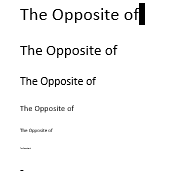Hey guys,
After seven years(!) I have to take up mathematics again for my masters degree. In secondary school I wasn't great at it, so I just started practicing again. I'm using a book which isn't providing a lot of help. I hope you can help me to understand it.
The exercise which I'm doing now starts easy with (a+b) (c+d). I understand that the answer is ac + ad + bc + bd. I can solve it by drawing a visualization. But I don't understand the following: (a+b) (c-d). One plus changed into a minus. So, how do I now where to put the pluses and the minuses? Another one which is (in my opinion a bit harder): -(a-b) (c+d). Long story short: how do I know where to put the pluses and minuses between the ac, ad, bc bd?
There is also another exercise which is hard, but I don't even know how it is called in math.. a few of the questions are:
10xy + 5x * 3y - 12x =
18ab : 6a * b - 3 =
9a * 3c : 9c * 3a =
I don't need the answers, but I do need a help with how to solve these.
After seven years(!) I have to take up mathematics again for my masters degree. In secondary school I wasn't great at it, so I just started practicing again. I'm using a book which isn't providing a lot of help. I hope you can help me to understand it.
The exercise which I'm doing now starts easy with (a+b) (c+d). I understand that the answer is ac + ad + bc + bd. I can solve it by drawing a visualization. But I don't understand the following: (a+b) (c-d). One plus changed into a minus. So, how do I now where to put the pluses and the minuses? Another one which is (in my opinion a bit harder): -(a-b) (c+d). Long story short: how do I know where to put the pluses and minuses between the ac, ad, bc bd?
There is also another exercise which is hard, but I don't even know how it is called in math.. a few of the questions are:
10xy + 5x * 3y - 12x =
18ab : 6a * b - 3 =
9a * 3c : 9c * 3a =
I don't need the answers, but I do need a help with how to solve these.

